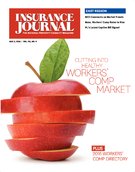A big question looming is whether the federal government or state governments will play the primary role in setting standards for self-driving cars.
Historically, the federal National Highway and Transportation Safety Administration promulgated automobile equipment safety standards while the states regulated the use of vehicles on their roads. Recent actions by NHTSA and the California Department of Motor Vehicles illustrate the growing tension surrounding the regulation of self-driving cars.
Two Frameworks
Last December, the California DMV issued draft regulations for public use of self-driving cars. The regulations expressly exclude self-driving cars that do not have operator controls — no steering wheel, no brake pedal, no accelerator pedal. If adopted, this regulation would preclude public use of self-driving cars without operator controls in California.
In February, the NHTSA issued an interpretive letter to Google on the application of various Federal Motor Vehicle Safety Standards to autonomous vehicles without operator controls. The key finding in the interpretive letter is the agency’s conclusion that in a car without operator controls, the software controlling the car is the “driver.” The NHTSA concluded that a self-driving car without operator controls could not satisfy many of the current FMVSS standards, requiring either the promulgation of a new set of equipment standards specific to self-driving cars or the issuance of exemptions by the NHTSA.
While the NHTSA focuses on specific equipment requirements — for example turn-signal controls — the draft California DMV regulations require assessment of the overall performance of the self-driving car. The NHTSA approach was designed to address incremental safety improvements; the DMV approach to provide a holistic framework for new technology.
A Patchwork of Regulation
Absent federal standards that override state requirements for self-driving cars, a self-driving car without operator controls could at some point reach a state border and stop because the software knows that it is not compliant with the provisions of adjoining state’s motor vehicle code.
When state vehicle safety standards are inconsistent, the “dormant” interstate commerce clause can be triggered. The leading U.S. Supreme Court case on inconsistent state vehicle safety standards dates to 1959. In that case, Bibb v. Navajo Freight Lines, Illinois had mandated curved mudguards on heavy trucks. Arkansas mandated straight mudguards. Straight mudguards were legal in every state other than Illinois and were the interstate trucking industry standard. There was no federal mudguard standard. The U.S. Supreme Court concluded that the Illinois curved mudguard statute placed an unconstitutional burden on interstate commerce, but noted that a new safety device, out of line with the requirements of other states, could be so compelling that the innovating state need not be the one to give way.
It is likely that Navajo Freight Lines will never be applied to self-driving cars.
Secretary of Transportation Anthony Foxx has announced that the NHTSA will issue guidance this year on testing protocols and benchmarks for autonomous vehicles. This suggests that the NHTSA may shift to a more holistic approach, although one that is likely to differ from the California DMV.
Even if NHTSA does not act before self-driving cars are lawfully sold to the public in some state, when those cars reach a state line and stop operating, it is likely that Congress will enact legislation preempting conflicting state laws, or state voters will pressure state legislatures to allow them access to new technologies available in adjoining states.
Was this article valuable?
Here are more articles you may enjoy.


 Senators Launch Probe Into Demotech’s Ratings in Florida
Senators Launch Probe Into Demotech’s Ratings in Florida  Viewpoint: Artificial Intelligence Is Rewriting the Rules for Commercial Lines
Viewpoint: Artificial Intelligence Is Rewriting the Rules for Commercial Lines  AIG Partners With Amwins, Blackstone to Launch Lloyd’s Syndicate Using Palantir
AIG Partners With Amwins, Blackstone to Launch Lloyd’s Syndicate Using Palantir  UPS Ripped Off Seasonal Workers With Unfair Pay Practices, Lawsuit Alleges
UPS Ripped Off Seasonal Workers With Unfair Pay Practices, Lawsuit Alleges 



